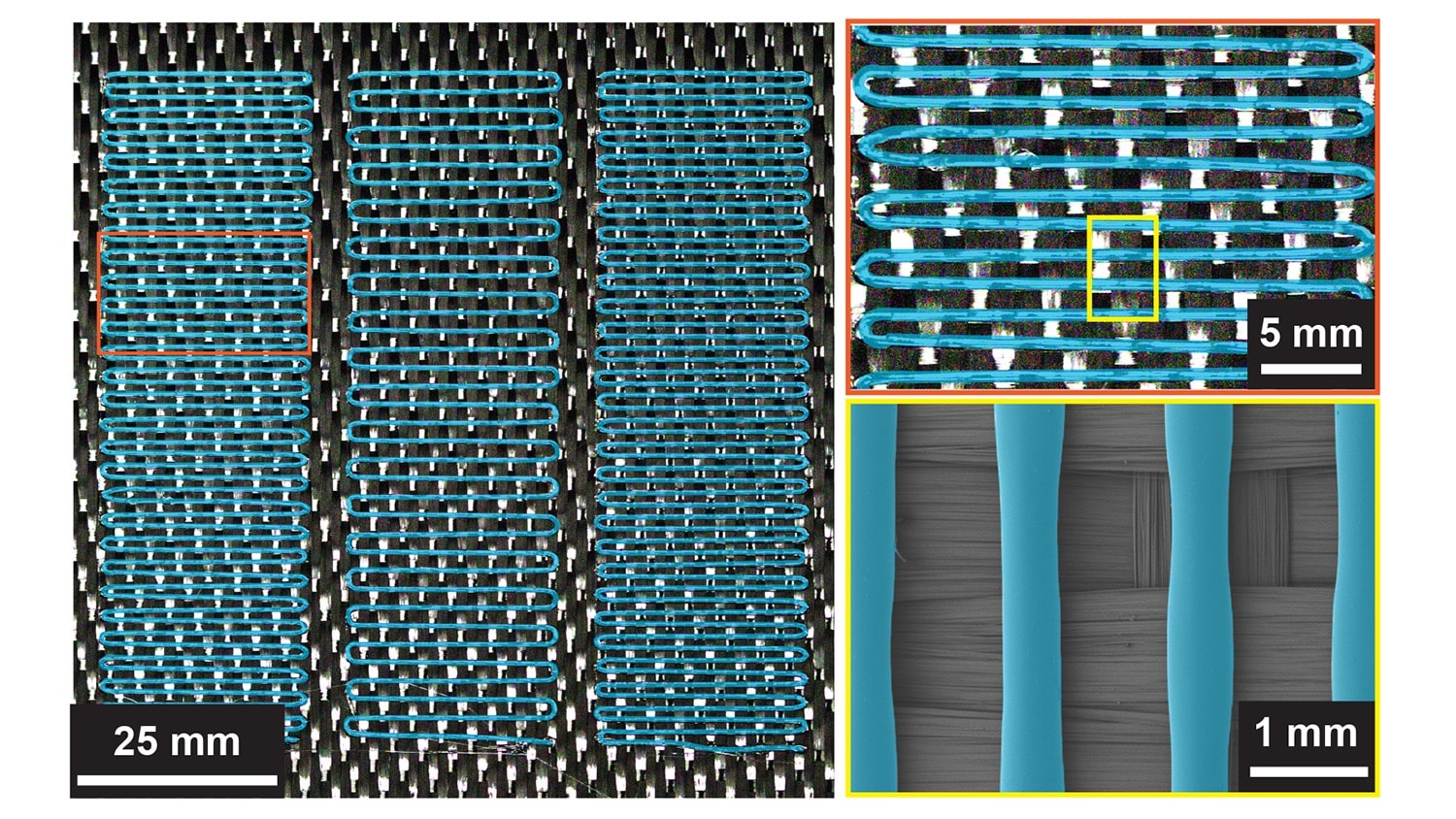New Tech Solves Longstanding Challenges for Self-Healing Materials

Engineering researchers have developed a new self-healing composite that allows structures to repair themselves in place, without having to be removed from service. This latest technology resolves two longstanding challenges for self-healing materials, and can significantly extend the lifespan of structural components such as wind-turbine blades and aircraft wings.
“Researchers have developed a variety of self-healing materials, but previous strategies for self-healing composites have faced two practical challenges,” says Jason Patrick, corresponding author of the research paper and an assistant professor of civil, construction and environmental engineering at North Carolina State University.
“First, the materials often need to be removed from service in order to heal. For instance, some require heating in an oven, which can’t be done for large components or while a given part is in use. Second, the self-healing only works for a limited period. For example, the material might be able to heal a few times, after which its self-repairing properties would significantly diminish. We’ve come up with an approach that addresses both of those challenges in a meaningful way, while retaining the strength and other performance characteristics of structural fiber-composites.”
In practical terms, this means users can rely on a given structural component, such as a wind-turbine blade, for a much longer period of time without worrying about failure.
“By increasing the longevity of these composites, we make them more sustainable,” Patrick says. “And while wind-turbine blades are a good example, structural composites are found in a wide variety of applications: aircraft wings, satellites, automotive components, sporting goods, you name it.”
Here’s how the new, self-healing fiber-reinforced composite works.
Laminated composites are made from layers of fibrous reinforcement, e.g. glass and carbon-fiber, bonded together. Damage most often occurs when the “glue” that binds these layers together begins to peel away from the reinforcement, or delaminate. The research team addressed this problem by 3D printing a pattern of thermoplastic healing agent onto the reinforcement material. The researchers also embedded thin “heater” layers in the composite. When an electrical current is applied, the heater layers warm up. This, in turn, melts the healing agent, which flows into any cracks or microfractures within the composite and repairs them.
“We’ve found that this process can be repeated at least 100 times while maintaining the effectiveness of the self-healing,” Patrick says. “We don’t know what the upper limit is, if there is one.”
The printed thermoplastic also enhances inherent resistance to fracture by up to 500%, meaning it requires more energy to cause delamination in the first place. In addition, the healing agent and heater layers are all made of readily available materials, and are relatively inexpensive.
“While making composites that incorporate our design would be marginally more expensive, the cost would be more than offset by significantly extending the lifespan of the material,” Patrick says.
Another advantage of the new technology is that, if incorporated into aircraft wings, the internal heating elements would allow airlines to stop using chemical agents to remove ice from wings when aircraft are on the ground, and also to de-ice in flight.
“We’ve demonstrated that this multi-functional technology works,” Patrick says. “We’re now looking for government and industry partners to help us tailor these polymer-based composites for use in specific applications.”
The paper, “Prolonged in situ Self-healing in Structural Composites via Thermo-Reversible Entanglement,” is published open access in the journal Nature Communications. First author of the paper is Alexander Snyder, a Ph.D. student at NC State. The paper was co-authored by Zachary Phillips and Jack Turicek, Ph.D. students at NC State; Charles Diesendruck of Technion–Israel Institute of Technology; and Kalyana Nakshatrala of the University of Houston.
The work was done with support from the U.S. Air Force Office of Scientific Research, under grant number FA9550-18-1-0048; and the Department of Defense’s Strategic Environmental Research and Development Program, under grant number W912HQ21C0044.
-shipman-
Note to Editors: The study abstract follows.
“Prolonged in situ Self-healing in Structural Composites via Thermo-Reversible Entanglement”
Authors: Alexander D. Snyder, Zachary J. Phillips , Jack S. Turicek and Jason F. Patrick, North Carolina State University; Charles E. Diesendruck, Technion–Israel Institute of Technology; and Kalyana B. Nakshatrala, University of Houston
Published: Oct. 31, Nature Communications
DOI: 10.1038/s41467-022-33936-z
Abstract: Natural processes continuously degrade a material’s performance throughout its life cycle. An emerging class of synthetic self-healing polymers and composites possess property-retaining functions with the promise of longer lifetimes. But sustained in-service repair of structural fiber-reinforced composites remains unfulfilled due to material heterogeneity and thermodynamic barriers in commonly cross-linked polymer-matrix constituents. Overcoming these inherent challenges for mechanical self-recovery is vital to extend in-service operation and attain widespread adoption of such bioinspired structural materials. Here we transcend existing obstacles and report a fiber-composite capable of capable of minute-scale and prolonged in situ healing—100 cycles: an order of magnitude higher than prior studies. By 3D printing a mendable thermoplastic onto woven glass/carbon fiber reinforcement and co-laminating with electrically resistive heater interlayers, we achieve in situ thermal remending of internal delamination via dynamic bond re-association. Full fracture recovery occurs below the glass-transition temperature of the thermoset epoxy-matrix composite, thus preserving stiffness during and after repair. A discovery of chemically driven improvement in thermal remending of glass- over carbon-fiber composites is also revealed. The marked lifetime extension offered by this self-healing strategy mitigates costly maintenance, facilitates repair of difficult-to-access structures (e.g., wind-turbine blades), and reduces part replacement, thereby benefiting economy and environment.